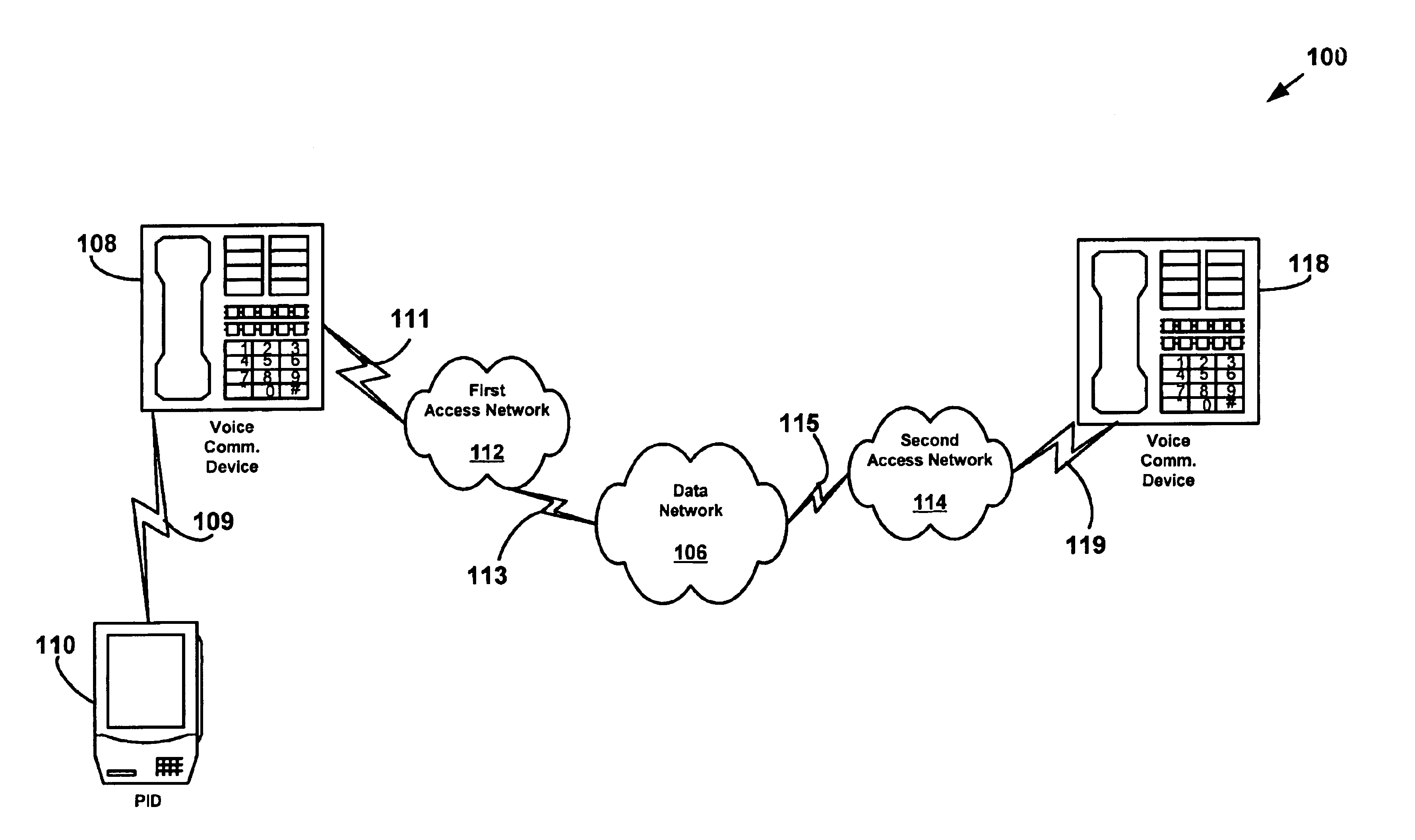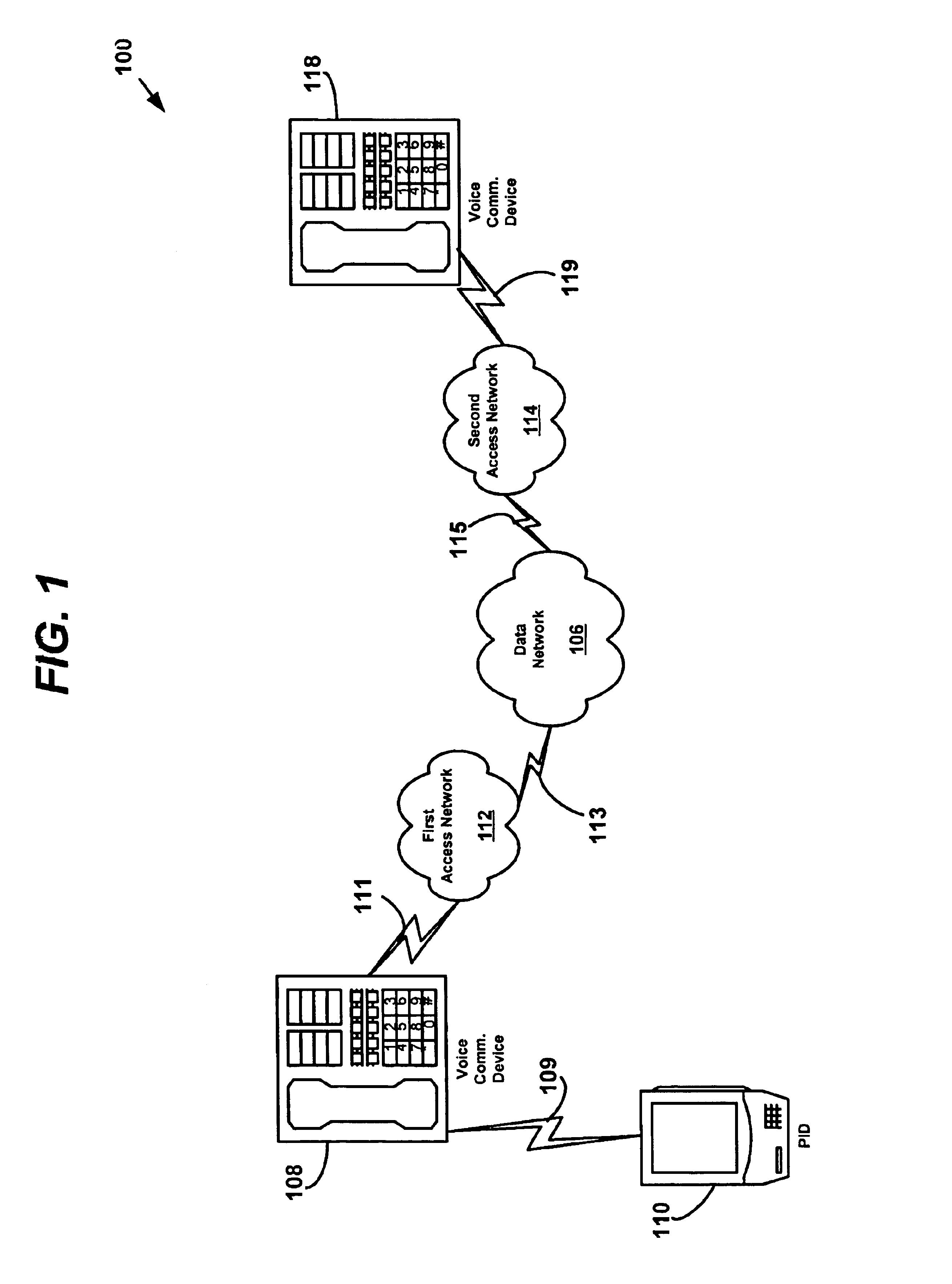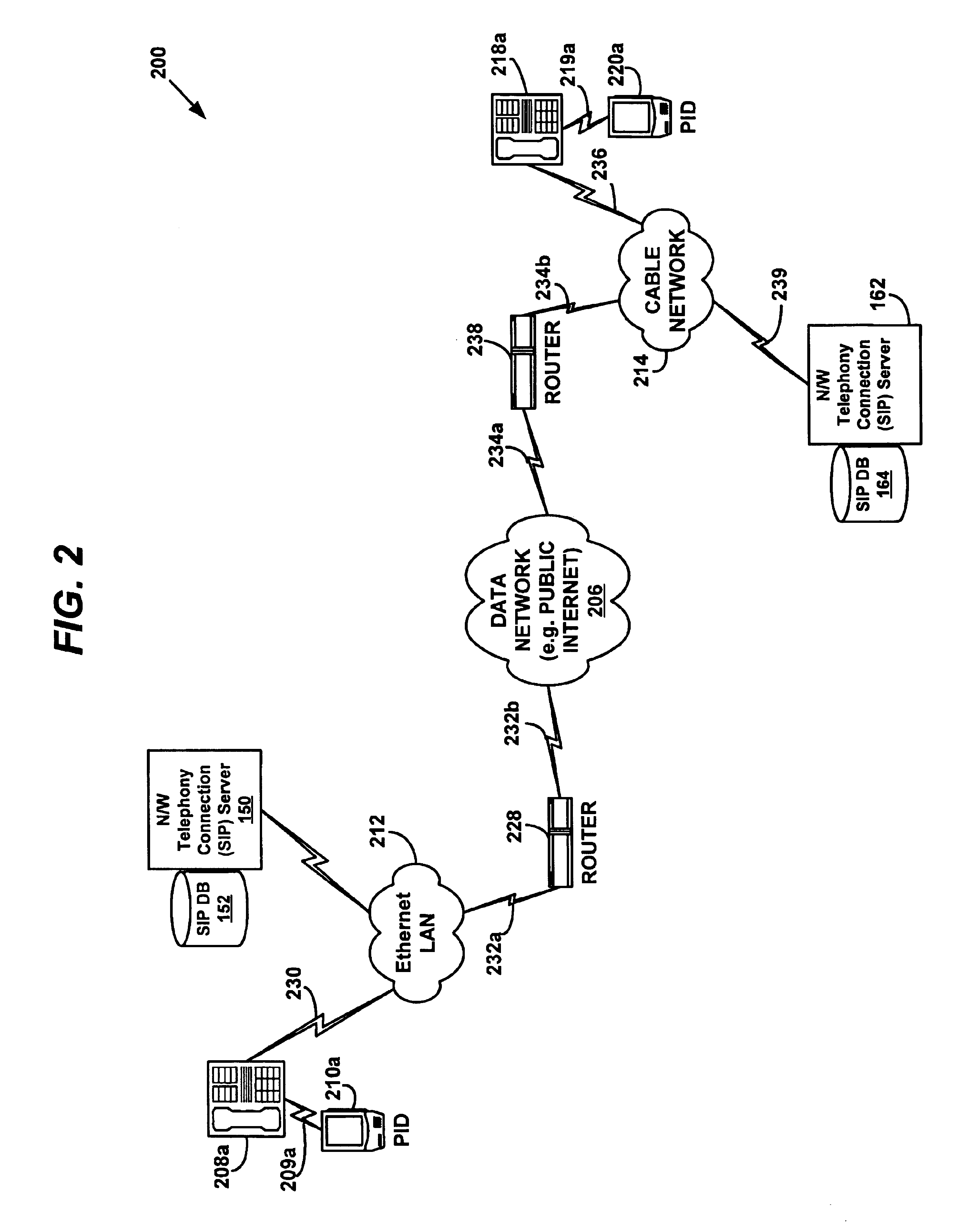System and method for enabling encryption/authentication of a telephony network
a technology of encryption and authentication, applied in the field of system and method for enabling encryption and/or authentication on a telephony network, can solve the problems of lack of flexibility of pstn features, clumsy and difficult use of features, and the flexibility of features is nevertheless limited in their flexibility and scope, so as to achieve the effect of more safe transmission
- Summary
- Abstract
- Description
- Claims
- Application Information
AI Technical Summary
Benefits of technology
Problems solved by technology
Method used
Image
Examples
first embodiment
FIG. 10 is a flowchart showing a method 1000 for enabling encryption and / or authentication services on a telephony network according to the present invention. A first PID, such as the first PID 210a associated with UserA, transmits a request for encryption and / or authentication data to a second PID 220a, such as the second PID 220a associated with UserA, as shown in step 1002. The second PID then responds to the request for encryption and / or authentication data by transmitting encryption and / or authentication data to the first PID, as shown in step 1004. For example, the second PID might transmit UserB's public key for an asymmetric cryptography system. In step 1006, the first PID receives the encryption and / or authentication data transmitted by the second PID, and preferably stores the information in an address book entry corresponding to UserB. In step 1008, the first PID transmits encryption and / or authentication data to the second PID. This may serve as acknowledgement to the se...
second embodiment
FIG. 12 is a flow diagram showing a method 1200 for enabling encryption and / or authentication services on a telephony network according to the present invention. A first PID, such as the first PID 210a associated with UserA, transmits a request to resolve a shared secret to a second PID 220a, such as the second PID 220a associated with UserA, as shown in step 1202. The second PID then responds to the request by transmitting a suggested shared secret to the first PID, as shown in step 1204. The first PID can either accept or reject the suggested shared secret, as shown in step 1204. If the first PID accepts the suggested shared secret (e.g. because it meets predefined criteria such as a minimum length requirement), then the first and second PIDs each store the shared secret in a user attribute database (such as in a private “encryption and / or authentication” field in an address book application) located on each PID, as shown in step 1212. If the first PID rejects the suggested shared...
PUM
 Login to View More
Login to View More Abstract
Description
Claims
Application Information
 Login to View More
Login to View More - R&D
- Intellectual Property
- Life Sciences
- Materials
- Tech Scout
- Unparalleled Data Quality
- Higher Quality Content
- 60% Fewer Hallucinations
Browse by: Latest US Patents, China's latest patents, Technical Efficacy Thesaurus, Application Domain, Technology Topic, Popular Technical Reports.
© 2025 PatSnap. All rights reserved.Legal|Privacy policy|Modern Slavery Act Transparency Statement|Sitemap|About US| Contact US: help@patsnap.com



